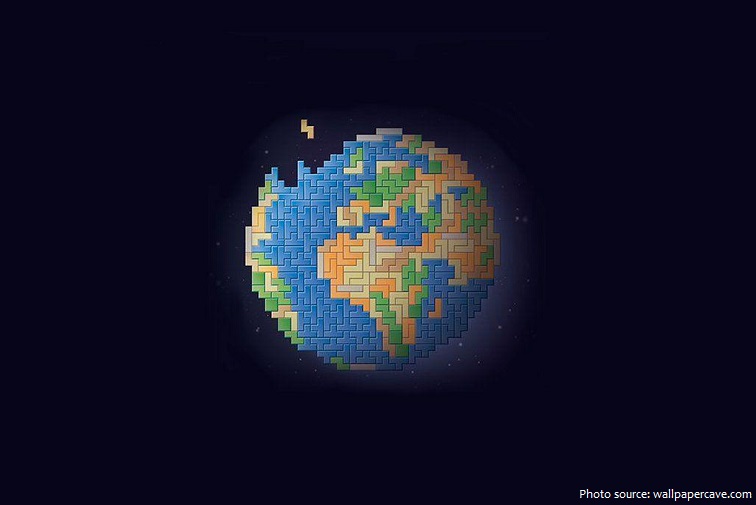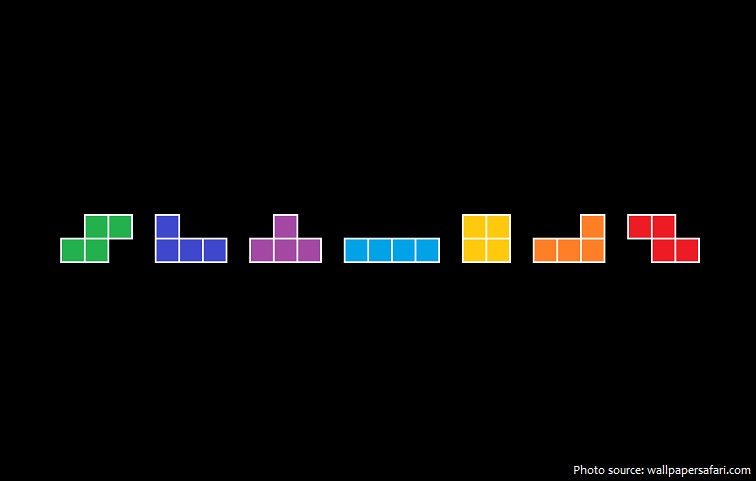
Tetris is a tile-matching puzzle game, developed in the Soviet Union in 1984.
The extremly popular and addictive game that swept the world in the 1980s and 1990s
It was created by Russian software engineer Alexey Pajitnov.
Alexey Pajitnov was a software engineer at the Soviet Academy of Sciences in Moscow, tasked with testing a new type of computer, the Electronika 60. To do so, he wrote a simple game based on a puzzle from his childhood. It would help assess how powerful the computer was – and provide a bit of fun.

Little did he know that the resulting game would go on to become one of the greatest, most addictive and most successful of all time.
Pajitnov claimed he created the name of the game by combining the Greek prefix tetra, which refers to the four squares contained in each block, with the word tennis.
It has been published by several companies for multiple platforms, most prominently during a dispute over the appropriation of the rights in the late 1980s. After a significant period of publication by Nintendo, the rights reverted to Pajitnov in 1996, who co-founded The Tetris Company with Henk Rogers to manage licensing.
With over 100 million copies sold, it is the 3rd best-selling video game of all time.

Though numerous sequels have been spawned, Tetris games almost always have the same play mechanics: differently shaped blocks drop at varying speeds, and, as the blocks descend, the player must rotate and arrange them to create an uninterrupted horizontal row on the screen. When the player forms one or more solid rows, the completed rows disappear. The goal of the game is to prevent the blocks from stacking up to the top of the screen for as long as possible. Subsequent versions of the game included different modes of play and unique twists, but the overall game play usually mirrored the original Tetris quite closely.
The earliest versions of Tetris had no music. The NES version includes two original compositions by Hirokazu Tanaka along with an arrangement of “Dance of the Sugar Plum Fairy” from the second act of The Nutcracker, composed by Tchaikovsky. The Tengen version also feature original music, and an arrangement of “Kalinka” and “Katyusha”.

1860s Russian folk tune “Korobeiniki” first appeared in Spectrum Holobyte’s Mac and Apple IIgs 1988 versions of Tetris. Nintendo’s Game Boy version also includes “Korobeiniki”, as well as the Johann Sebastian Bach’s French Suite No. 3 In B Minor (BWV 814), and an original track by Tanaka. “Korobeiniki” is used in most versions of the game, and has appeared in other games, albums and films that make reference to Tetris. It was also included in the SNES Tetris game, Tetris & Dr. Mario, Tetris DS and Blue Planet Software The Next Tetris (1999, PSX and Windows). Doctor Spin’s 1992 Eurodance cover (under the name “Tetris”) reached #6 on the UK singles chart. In the 2000s, The Tetris Company added as a prerequisite for the granting of the license that a version of “Korobeiniki” be available in the game.
The question Would it be possible to play forever? was first considered in a thesis by John Brzustowski in 1992. The conclusion reached was that the game is statistically doomed to end. If a player receives a sufficiently large sequence of alternating S and Z Tetrominoes, the naïve gravity used by the standard game eventually forces the player to leave holes on the board. The holes will necessarily stack to the top and, ultimately, end the game. If the pieces are distributed randomly, this sequence will eventually occur. Thus, if a game with, for example, an ideal, uniform, uncorrelated random number generator is played long enough, any player will top out.

Modern versions of Tetris released after 2001 use a bag-style randomizer that guarantees players will never receive more than four S or Z pieces in a row by shuffling tetrominoes of all types for each 7 pieces. This is one of the “Indispensable Rules” enforced by the Tetris Guideline that all officially licensed Tetris games must follow.
Guinness World Records recognized Tetris as the most ported video game in history, having appeared on over 65 different platforms as of October 2010.
Fewer than 10 copies of the Sega Megadrive version of Tetris are currently known to exist, making it one of the most sought-after video games of all time. One complete example was recently sold to a private bidder for almost £4,000 ($8,130). The Megadrive version of Tetris is so scarce because the original release was quickly withdrawn after the game became involved in a legal battle in which the rights were eventually awarded to Nintendo.

Since the 2000s, internet versions of the game have been developed. However, commercial versions not approved by The Tetris Company tend to be purged due to company policy. The most famous online version, Tetris Friends by Tetris Online, Inc., had attracted over a million registered users.
Guinness World Records 2009 Gamer’s Edition ranks Tetris #2 on the “Top 50 Console Games of All Time.”
Apple announced “Tetris: The Movie” will join its growing lineup of premium films from award-winning storytellers. Starring Golden Globe Award-winner Taron Egerton (“Rocketman,” “Kingsman” franchise).
Tetris for the iPod is launched and instantly becomes Apple’s #1 downloaded game.